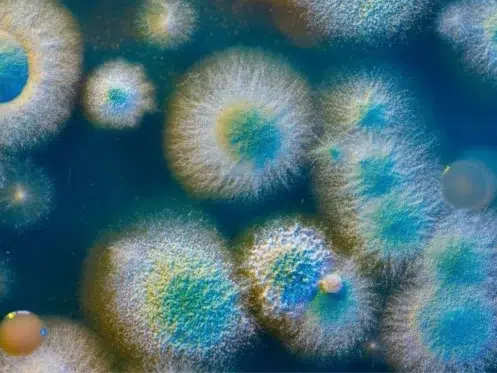Difference Between Mold and Fungus
Most homeowners are on the lookout for signs of mold and fungus. We know that both can have harmful effects on our home and health, but what’s the real difference between mold and fungus? The words are frequently used interchangeably, but each has unique characteristics to differentiate between the two. While they do share similar traits, they can each come with different challenges and effects.
Finding the Source
To best understand the difference between mold and fungus, it’s essential to know where they come from and how they grow. The truth is that mold is a type of fungus, but it’s not the only kind. The difference is in the cell structure; mold is always multicellular, while fungi can be either a single or multi-cell organism. However, both mold and fungus belong to the kingdom of Fungi.
Fungi spread through the air and are all around us. It’s essential to life itself because it assists in the breakdown and decay of organic material, like plants and animals. By working together with bacteria, fungi break down organic matter into oxygen, nitrogen, and carbon, which all get released into our atmosphere. These nutrients spread throughout the soil, creating a natural fertilizer. Without fungi, most wild trees and grasses wouldn’t be able to thrive.
The source of mold and fungus is spores from other mold or fungi. There are thousands of types of fungal spores that are invisible to the naked eye. Like seeds from a tree or flower, spores travel either through air, water or on humans and animals. To reproduce, both thrive in warm, damp spaces. Depending on the type of fungi, reproduction can occur sexually or asexually.
Types of Fungi
Three main types of fungi vary in cellular structure and how they look.
Mold
One of the main traits that separate mold from fungus is its cellular structure. Mold is always multicellular and reproduces through spores. Mold starts as invisible spores. However, the right environment causes those spores to reproduce into a visible form of mold that can take over. Since mold thrives in humid environments, it can be a constant struggle and is a legitimate cause for concern. Mold has its uses in nature but can cause considerable damage to your home. Mold needs a food source, like all living organisms. Unfortunately for your home, its food source is your wall studs, floorboards, drywall, and more.
While mold is a nightmare to deal with at home, it has useful purposes. For example, penicillin and other medicines come from mold. We wouldn’t have cheese, cured meats, and other delicious foods without mold. It has its uses, just not inside your walls.
Yeast
Yeast is an abundant edible form of fungi. Without yeast, we wouldn’t have bread, beer, and even ethanol. Yeast reproduces by blooming, which is an asexual form of reproduction since it is unicellular. That means a single yeast cell can create multiple, separate cells. When yeast blooms, it produces a new cell attached. Eventually, that cell separates and can again reproduce on its own. A process called fermentation creates the yeast we use to make bread, beer, wine, and ethanol. While it’s been in use in some form for around 5,000 years, we’re now able to produce yeast commercially for different purposes.
Mushrooms
Mushrooms are fungi in fruiting form. The part that we recognize as the mushroom is only part of the fungal structure that includes a portion underground. However, the fruit is the most important part because it contains spores. As with all fungi, spores are essential to reproduction. Gills, slits, or tubs on the underside of a mushroom contain spores that spread through the air and on animals. Those spores can stay dormant until they reach the perfect environment, which is often on dead trees and stumps. Mushrooms grow where other plants won’t since they love constant moisture and a low-light environment.
Preventing Fungal Growth
In simple terms, mold is a type of fungus. They both come from the same source, but mold is only one form that fungi can take. You’re likely to have different types of fungus in your home, often invisible and completely harmless. But when mold starts to grow, you could have a problem. Mold begins undetectable and can’t grow unless it has the right conditions. Luckily, you can take steps to keep mold at bay.
There’s no doubt that mold spores will make their way into your home, whether through an open window or even on your clothing. By reducing humidity in your home, mold won’t stand a chance. Ventilate regularly, dry any spills, and dry any naturally humid areas like your bathroom. Since mold thrives in a dark and damp environment, you can prevent it at its source.
If you do find that you have a mold problem or have questions, you can contact iMold. We can inspect and evaluate your home or business for mold. We use the latest technology to detect and test our findings so you can form the best course of action.
Want more mold facts? Follow us on Facebook and Instagram!

